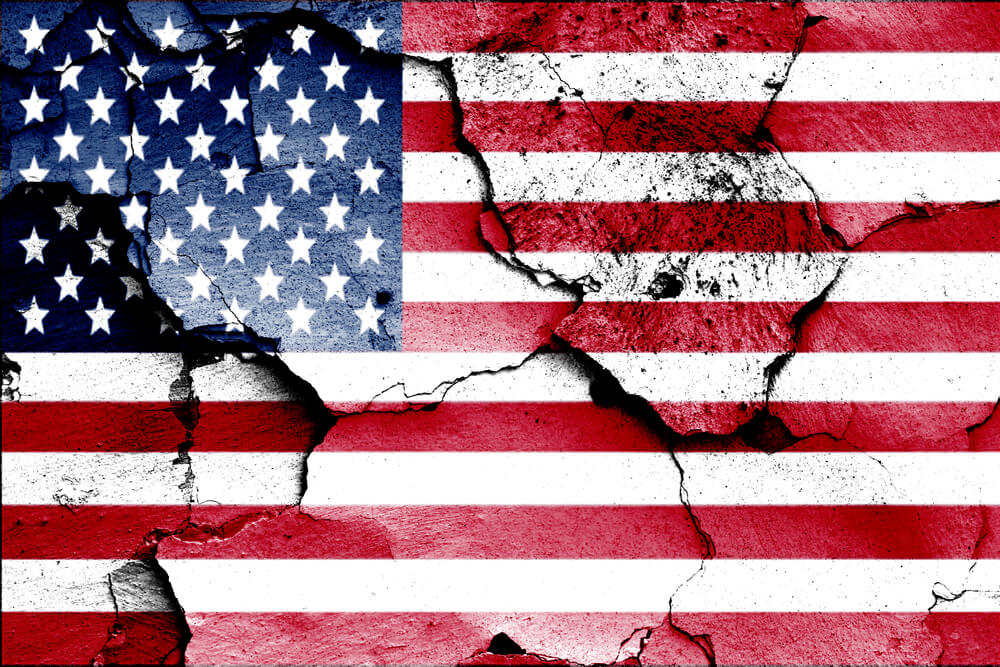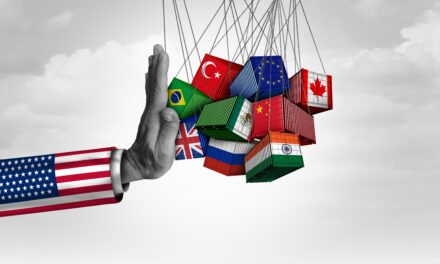BALTIMORE — Even the most beautiful flower dries up and dies. Even the most gifted athlete, if he lives long enough, shuffles and stoops. All living things bend, corrode and decay.
Don’t blame us. We are part of nature too, not creators or designers of it. We do our best just to figure out how it works.
Beginning of the End
We’ve seen that all bubbles pop … all booms end … and all bull markets on Wall Street turn into bear markets.
Empires, like all things in nature, have life cycles, too. They are born, they grow to be fat and sassy. Soon, they are too big for their britches. Inevitably, the buttons pop. Pretty soon, you can’t take them out in public.
Americans began expanding their empire from the get-go, always pushing further and further west. By the late 1600s, they were at the foothills of the Appalachians. By the end of the 1700s, they were on the Mississippi. And by the middle of the following century, they were traveling from coast to coast in railroad cars.
They conquered territory from the Native Americans … bought it from the French and the Russians … beat back a schismatic attempt at independence by the southern states and gained huge territories from the Mexicans, by hook or by crook, depending on how you look at it.
By the end of the 19th century, they already had an imperial possession halfway around the world — the Philippine islands — and were ready for the heyday of American hegemony … the 20th century.
That’s how the empire got its start. When it will meet its finish is anyone’s guess, but we think we know when the beginning of the end began.
By the late 1990s, the fake money (begun in 1971) had already obscured the honest price signals of a capitalist system. And by then, too, the feds had put their noses into almost every nook and cranny of the economy — with the Federal Register growing by 50,000 pages of rules and regulations every year.
Great Decline
When the 21st century began, the U.S. was already tilting into advanced middle age. The war on poverty had been going on for 36 years … the war on drugs had been in business for 29 years. The fake money system, too, had been around for more than a quarter of a century.
The imbecility and absurdity of its dumbbell policies — like too many shots of whisky, too many cigarettes and too many cream-filled donuts — was catching up to it.
After 1999, the U.S. declined (against other nations) by almost every measure. Per capita wealth, infant mortality, life expectancy, freedom, business climate, equality; you name it, the U.S. was no longer No. 1.
In terms of GDP, after WWII, the U.S. had 35% of world output. That number fell gracefully, until 2000. Then it fell hard, to only 19% today.
And in 2009, China became the world’s largest exporter. Now, a decade later, look out your window because another milestone is passing. Asian economies now account for half of the world’s GDP.
The value of America’s capital stock fell, too. Judged by the real money that we had before 1971 — measured at $35 to an ounce of gold — the Dow tumbled 84%. It has subsequently recovered … but only to about half its previous high.
Along with a big drop in stocks, after 1999 came a big deterioration in U.S. government finance. It is hard for us to imagine today, but just 20 years ago, the feds ran a surplus. And forecasters predicted that the surpluses would continue … wiping out the entire U.S. debt within 10 years.
It didn’t work out that way. The U.S. government debt was still under $6 trillion in 1999, with a $125 billion budget surplus. By 2008, there was $10 trillion of federal debt … and a budget deficit of $450 billion. Then it got much worse. Last year, the Trump Team logged a deficit of $1 trillion … which pushed the national debt up to $23 trillion.
Corrupted by Fake Money
What went wrong?
For one thing, the Republican Party, typically the guardian of the nation’s finances, went AWOL. Corrupted by the fake money, Republicans came to believe that “deficits don’t matter.” “Balanced budgets” became artifacts of the past.
For another, the much-heralded Internet Revolution turned out to be a flop. Electronic communications proved a great source of entertainment and distraction, but not of the profits and productivity that paid the bills.
Looking back on it, the Clinton years were a sweet spot in U.S. history. Private vice triumphed over public debauchery. Rather than stirring up trade wars … threatening foreign governments … or twisting the Federal Reserve chairman’s arm for lower rates, Mr. Clinton wisely retreated to the closet, where he did lewd and lascivious acts with a White House intern.
But there was more to it than that. Fake money was already queering the economy and Alan Greenspan’s fake interest rates were already perverting the stock market. Mr. Clinton enjoyed a booming economy and a rising stock market; his great virtue was that he was too preoccupied with his own dissipation to stop them.
And only a few months before the Arkansas governor took office, the U.S. got one of the greatest gifts in history: its arch enemy, the Soviet Union, threw in the towel. The Cold War was over.
Sad Consequences
The end of the Cold War should have liberated at least $200 billion in military expenses. But by then, the military industrial complex — the one that Dwight “Ike” Eisenhower warned against — already had enough members of Congress in its pocket to protect its budget.
The Deep State — a loose and spontaneous, bipartisan group of insiders, lobbyists, donors, think tanks, academics, politicians and bureaucrats — was only a threat in Ike’s administration. By 1990, the threat had become reality. So, after a brief pause, military spending continued to rise.
Meanwhile, the funny money continued to distort and disrupt the U.S. economy … so much so that another bubble — this one focused on housing — blew up in 2007-2008.
We’ll look at the debris from that blow up soon.
We’ll also look at the sad consequences of failing to bring the armed wing of the Empire’s Deep State under control.
In the 21st century, those two failures led to the most knuckleheaded disasters in American history.
Tune in next week …
Regards,
Bill
• This article was originally published by Bonner & Partners. You can learn more about Bill and Bill Bonner’s Diary right here.




